E-Bird Gull Survey https://ebird.org/checklist/S184107190
Subject: June Racerocks Gull Survey

E-Bird Gull Survey https://ebird.org/checklist/S184107190
Subject: June Racerocks Gull Survey
It’s that magical time of year where the Northern Elephant Seals come ashore and give birth! Our first mom is the same female who showed up first last year, Pink Tag 2 (who we affectionately call Bev), who came ashore on December 15th. After several days of being sassy and pregnant she gave birth to a new male pup on December 21st. 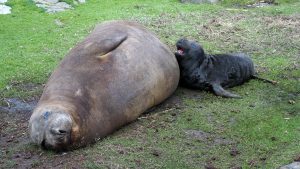
Bev seems to have a purposeful strategy showing up and birthing before the other females. Last season Bev showed up almost a month before the other moms, and left before the other moms were even getting ready to birth. By this time her pup was pretty huge and mobile. She gave birth last year on December 22 2020, so pretty much on schedule with what she did last year.
One of the first big hurdles for newborn pups is just figuring out just how to nurse, some pups take days to figure this out, but not this first pup: he was nursing within hours of being born is already looking plumper than when he was born.
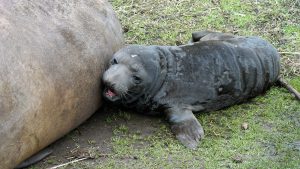
Weather:
Well we got the same dump of snow on February 13th that hit Victoria, arriving with some 40-50 knot outflow winds blowing the crunchy snow all over the place. Estimated about 10cm of snow, but due to the high winds it was moving around lots.
Visitors/Traffic:
No visitors in the last week besides the future Eco-Guardians coming out to do some training. The weather has been consistently >30 knots from Febryary 10th onwards.
Ecological Notes:
With the heavy winds and snowfall the California Sea Lion numbers have been reduced, we thought just for a night or two but the numbers haven’t returned as the snow melts and winds die down. We had 1 California on the jetty looking very sick and emaciated; and one on the South side of the lighthouse with a neckband bleeding pretty heavily.
The Stellers have come back once the snowfall stopped, but weren’t around during the peak snowfall days.
On February 13th we spotted 4 Southern Resident Orca’s cruising their way around the South side of the lighthouse. Talking with local experts it sounds like it was members of J-pod due to local hydrophone recordings.
Elephant Seal update:
On February 11th another pup was weaned and his mom left. This is our 4th pup to be weaned this season, with one still nursing.
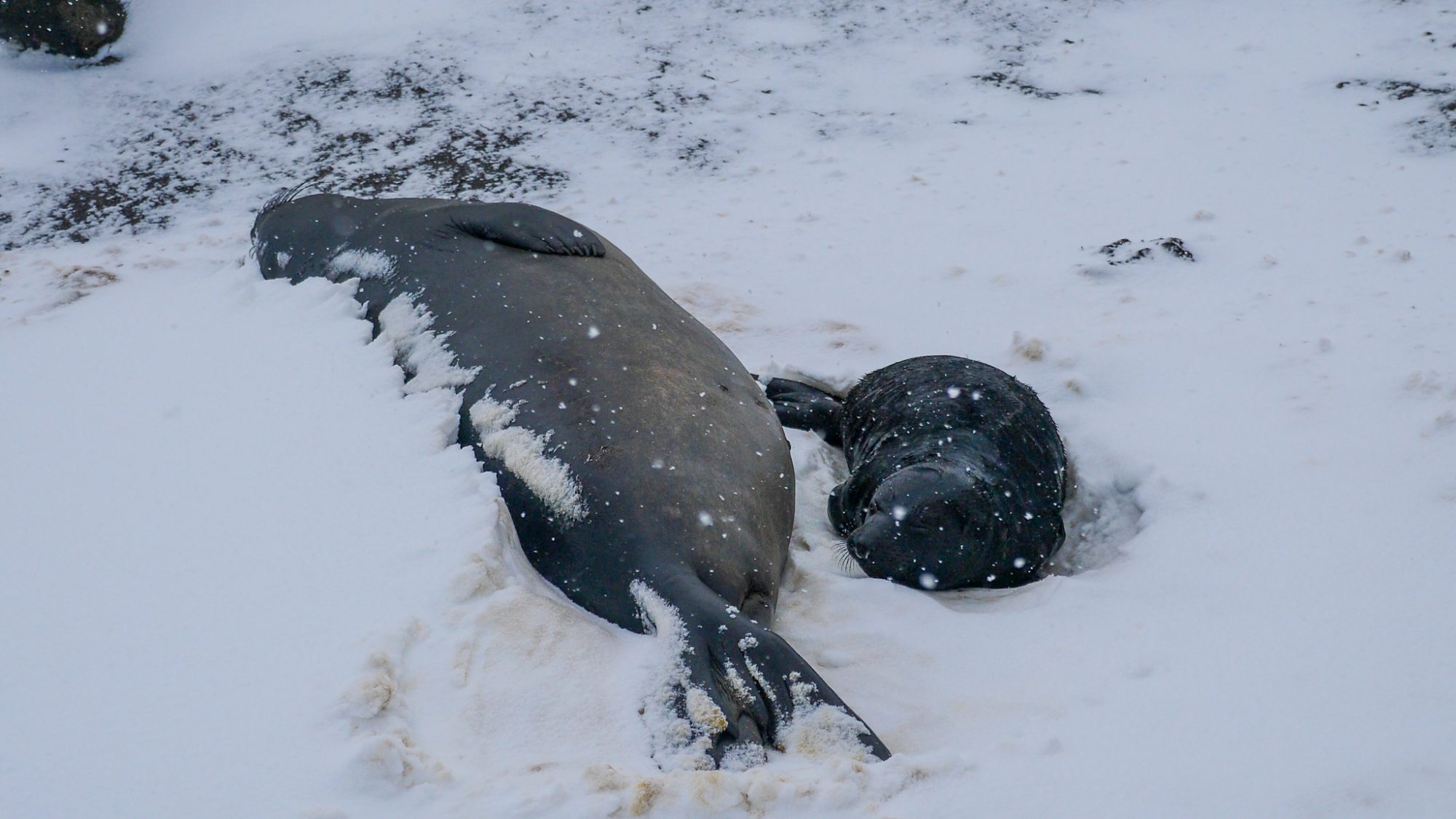
Our last female on the island, Jolene provided a wall to protect her pup from the blasting snowflakes.
Our oldest pup Cheermeister got bit on the head the night of February 7th, and retreated to the front door of the Eco-Guardian house. We thought his bite marks didn’t look that bad despite the amount of blood, but the wound never seemed to clot and may have been much deeper than it initially looked. Cheermeister died the morning of February 11th, and further inspection showed he had 2 deep bites from one of the adult male elephant seals; we assume Jafar the non-Beachmaster hanging out on the island.
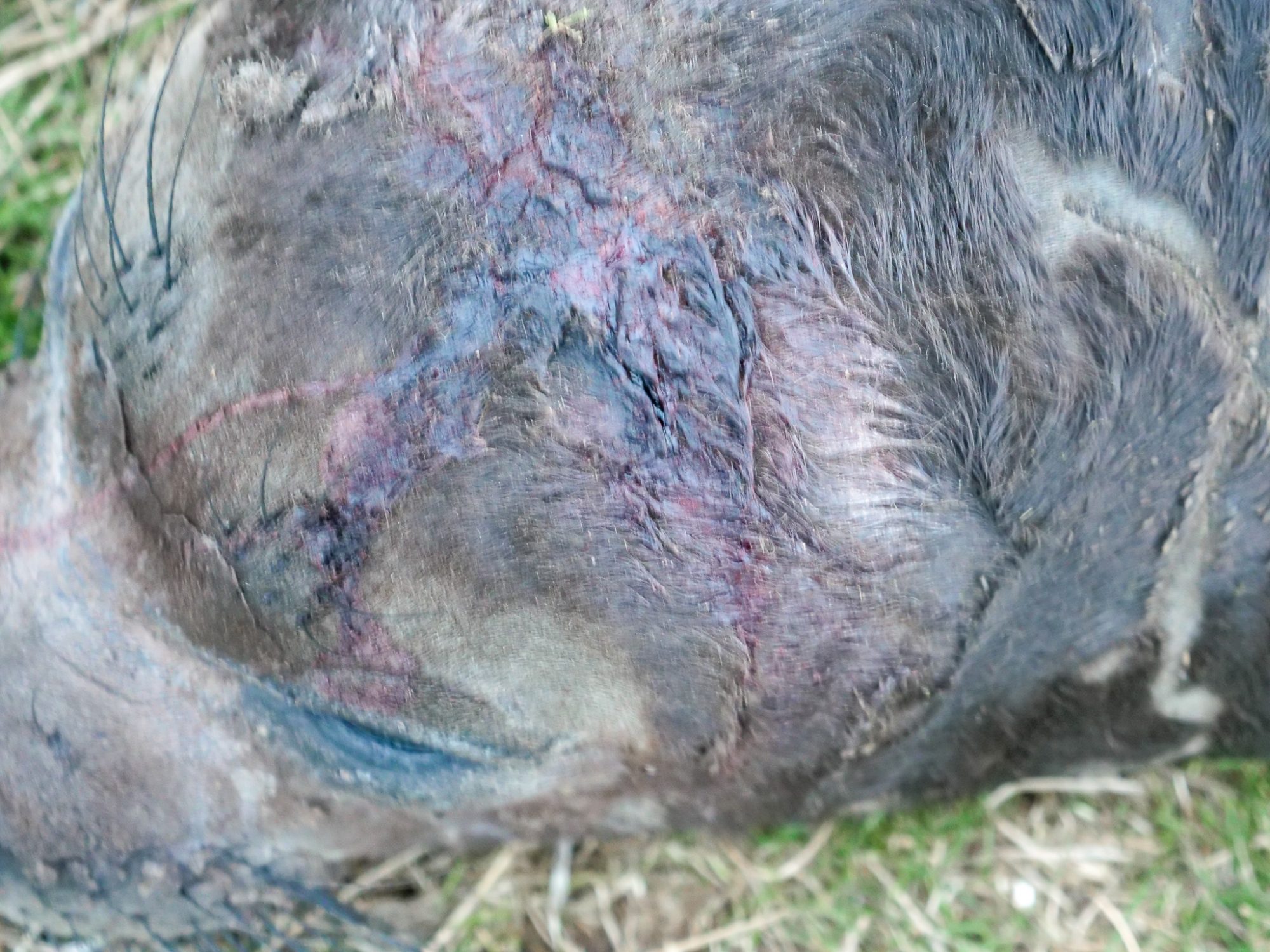
The head wound turned out to be fatal. Pretty crazy to see how much damage they can handle, but the wrong bite in the wrong spot can be enough to kill them.
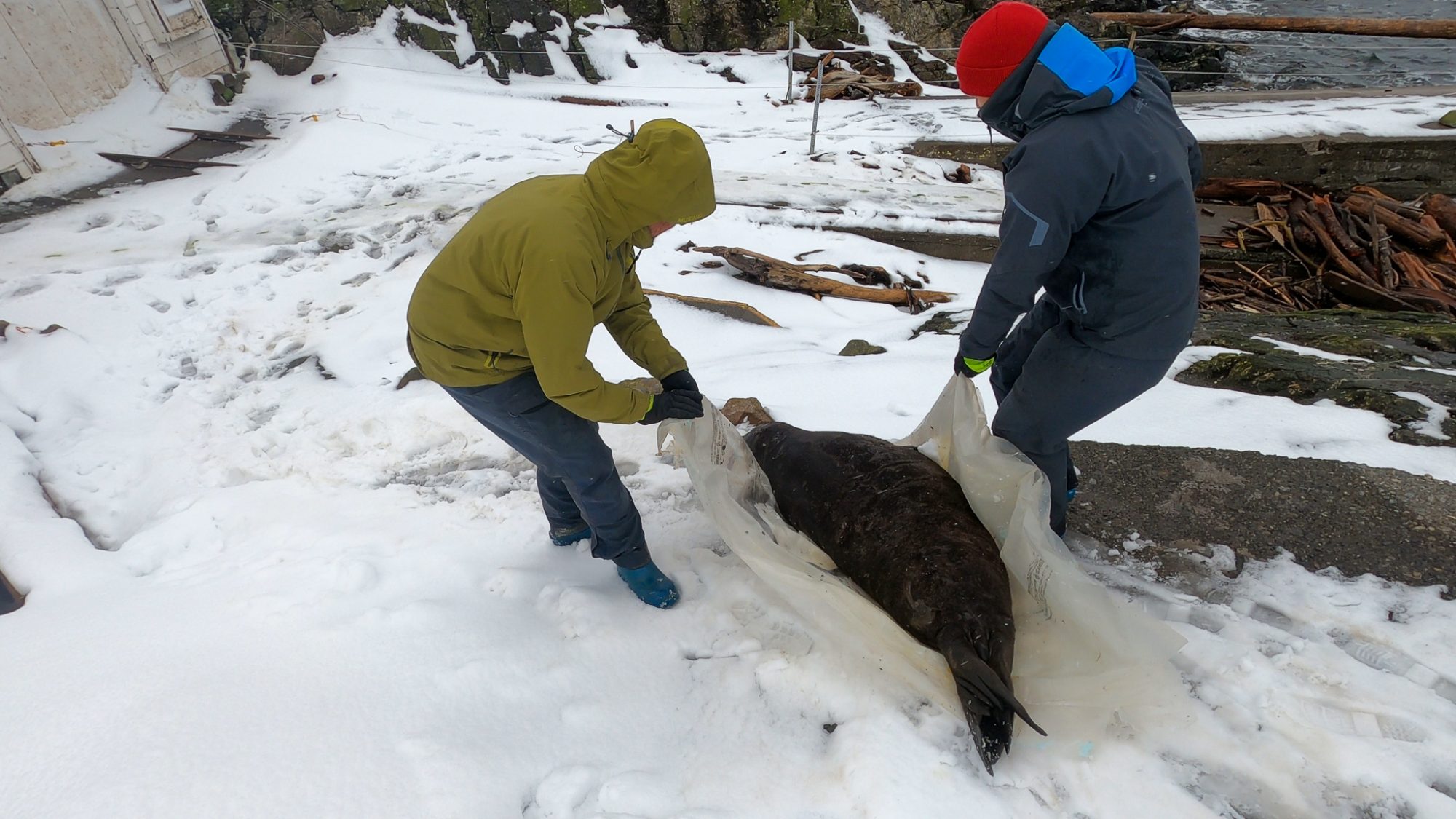
The photos of the seals make them look all cute and cuddly, but they’re actually all over 150kg (330lbs). If it weren’t for the slippery snow he would have been much harder to move.
It’s an interesting thing getting to live in such close proximity to wild animals. You don’t want to interfere in their lives, and sometimes that means watching things that make your stomach churn. Other times things happen and you don’t really know why, and are just left wondering. We are very grateful for our time on Race Rocks, getting to watch these pups be born, grow, and explore the island. Each birth is a celebration of the resiliency of these animals, making their comeback from near extinction.
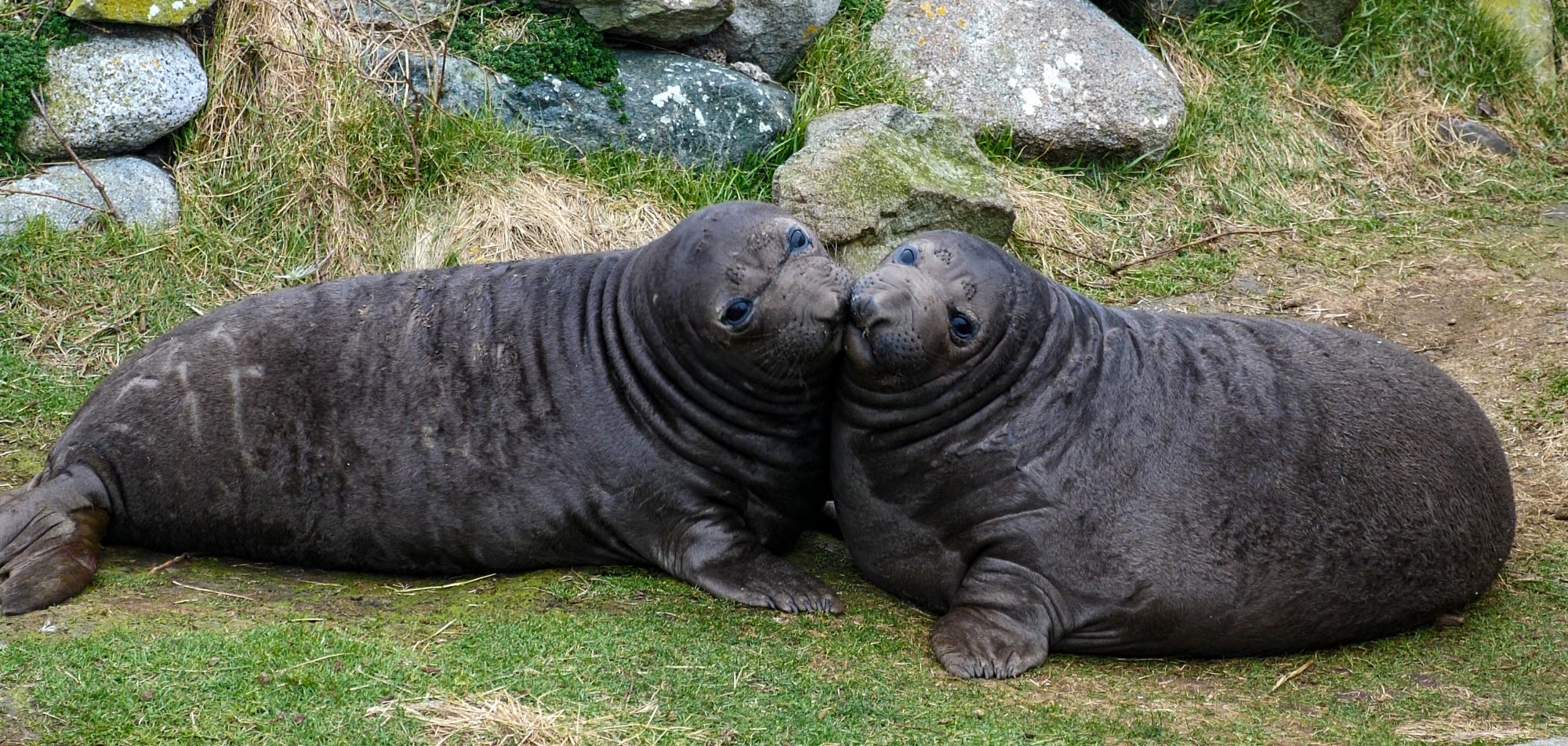
Jellybean and Sebastian have officially ‘podded up’ and are exploring the island together. Too much cuteness.
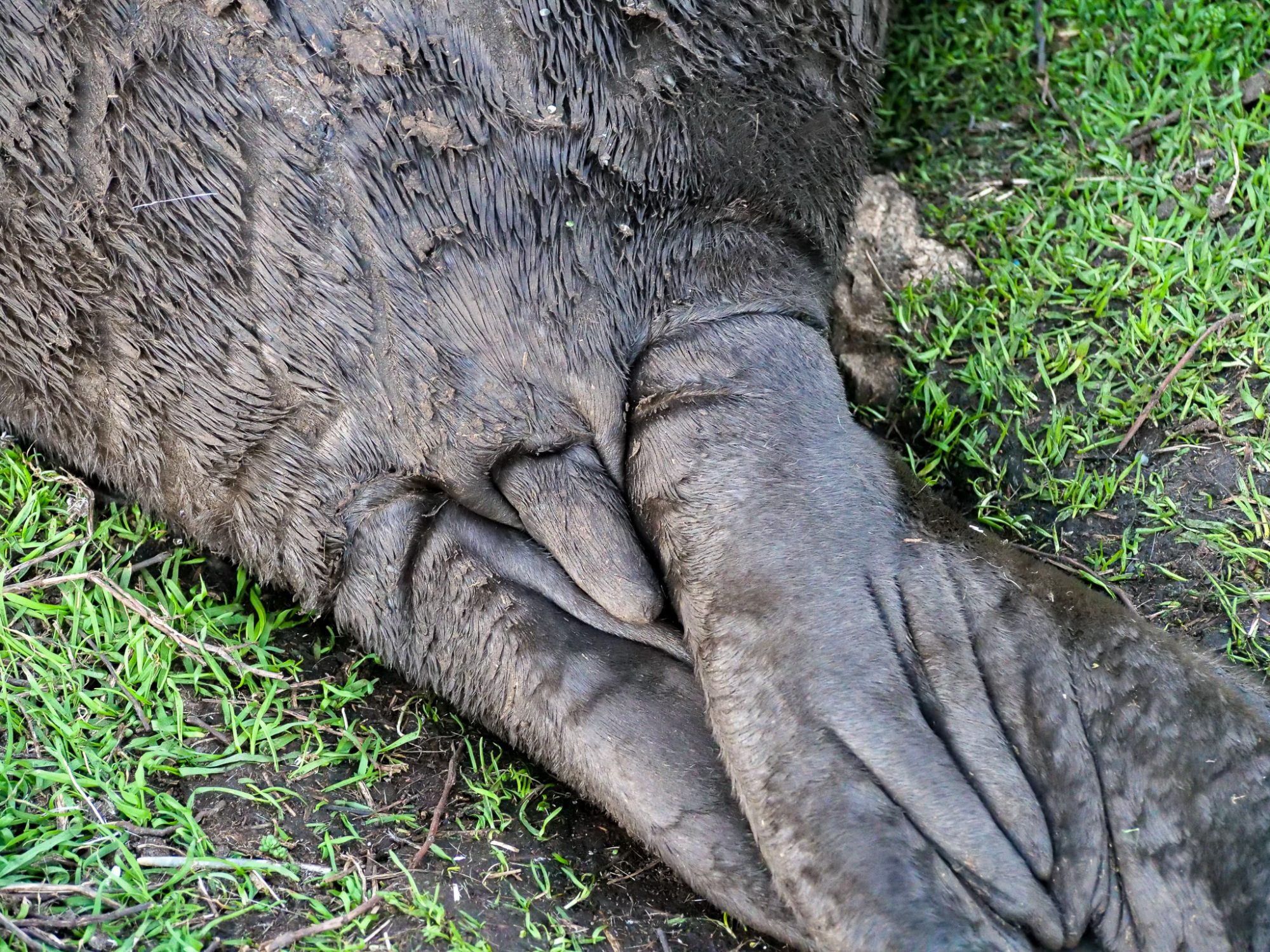
To offset the sadness of Cheery’s death, here’s a Elephant Seal pup’s tail. They’re possibly the most adorable part of the seal.
We got some Killer Whales cruising by the lighthouse today. Some light tail slapping S of the lighthouse, overall a quick visit with no escape responses from the Sea Lions in the water. We counted 4 Orca, they looked more like Residents than Biggs’, but we haven’t ID’d which pod they are. 15 around Race Rocks before heading W out the Juan de Fuca.
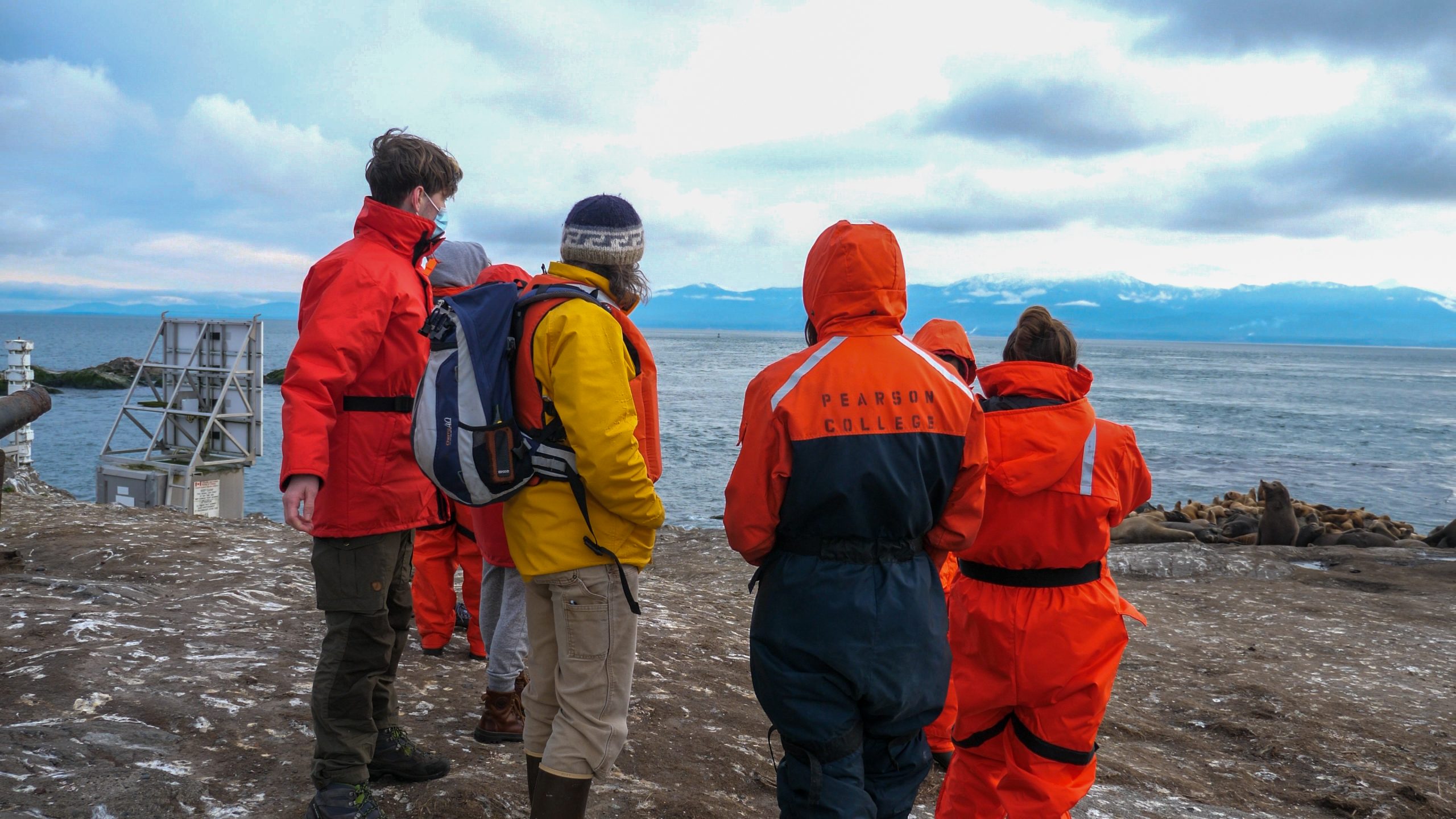
Laura Verhegge celebrating her 50th birthday at Race Rocks, sharing her love of nature with students near and far.
Weather: Stormy weekend! Steady 30knots with bursts of 50knots.
Visitors/Traffic: We were visited by the Marine Biology class and Biodiversity classes last week, so cool!
Ecological Notes:
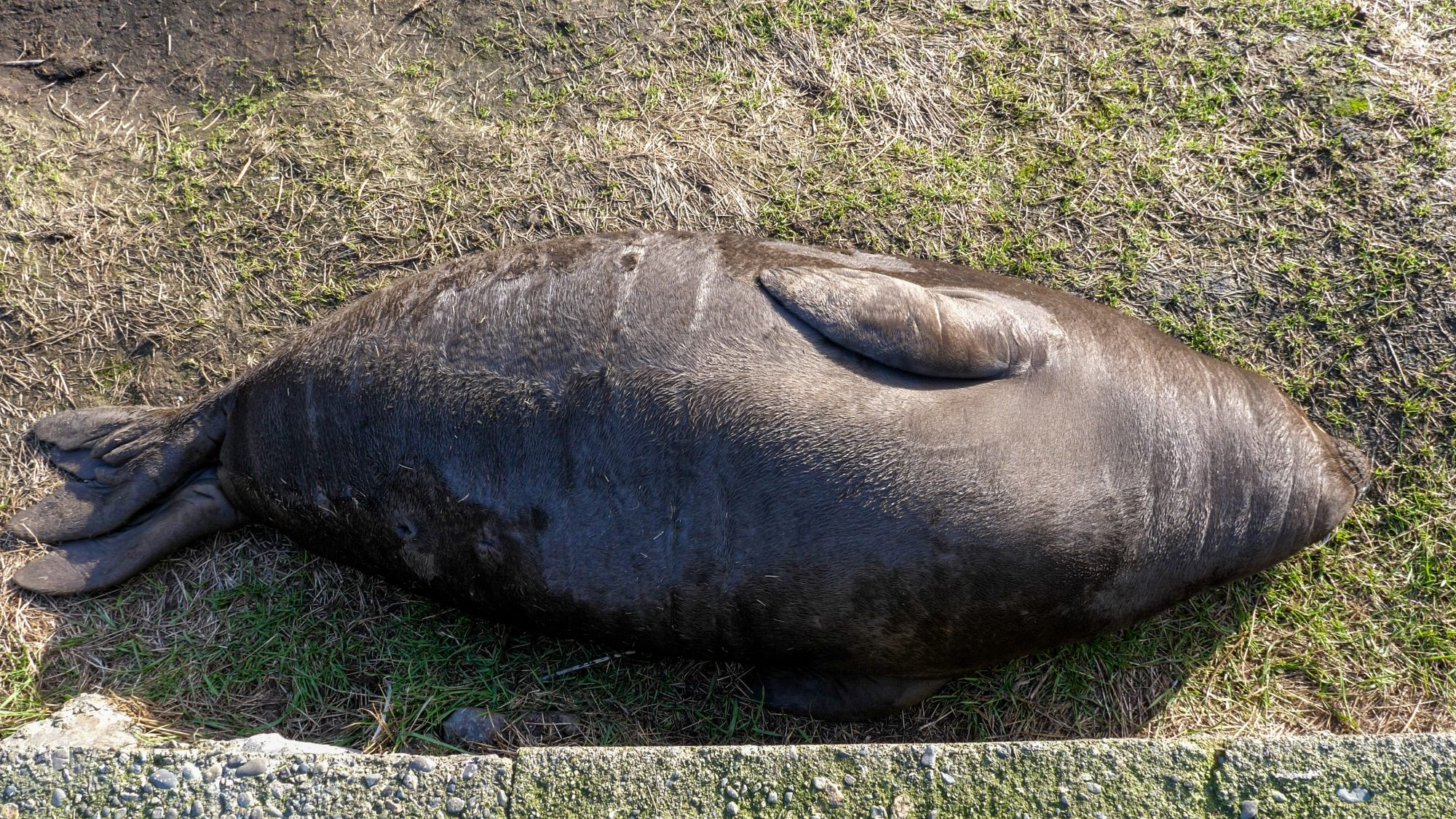
Sebastion hasn’t moved since his mom left, his little flippers can’t reach the ground with that big fat belly.
We had another mom wean her pup and leave Race Rocks on February 4th 2021 (Rhi-Rhi). We’ve been hoping for the 3 pups to ‘pod-up’ but no luck yet, the newest weaned pup is still too fat to move. The students have been studying the Steller Sea Lion carcass on the NE side of Race Rocks, with 25-30 eagles feeding on the carcass early in the mornings. Some of the students spotted a new dead California Sea Lion just S of the Lighthouse, it’s a branded seal with a tag on it, no obvious sign of death.
After Jafar’s last beating he’s been giving the Beachmaster a wide berth, but still relying on the boat ramp sneaker move.
Census:
Gulls: 79
Cormorants: 300
Eagles: 4
California Sea Lions: 149
Steller Sea Lions: 89
Elephant Seals: 9
Harbour Seals: 6
Turnstones: 0
Killdeer: 18
Weather: Storms brought in a ton of wood over the last few days to the jetty, but thankfully the Elephant Seals have been clearing it out.
Visitors/Traffic: A few whale watching boats on weekends. We started getting students coming out January 29th, and it’s been really great to see what they are interested in and what kind of questions they have about Race Rocks!
Ecological Notes:
We just had the 5th pup born on January 28th. We were wondering if it would survive, but seems to be healthy and growing. Our second female weaned her pup (Jellybean) and after mating with the Beachmaster tried to get back in the ocean. Unfortunately for her there was another new male hanging out on the boat ramp waiting for his opportunity to mate. What unfolded was a Machiavellian game of blubbery chess, video below.
We now have 2 weaned pups cruising around Race Rocks, with the next pup looking like he’s only a few days away from being weaned as well.
Census:
Gulls: 156
Cormorants: 533
Eagles: 6
California Sea Lions: 85
Steller Sea Lions: 177
Elephant Seals: 10
Harbour Seals: 22
Turnstones: 22
Oystercatchers: 13
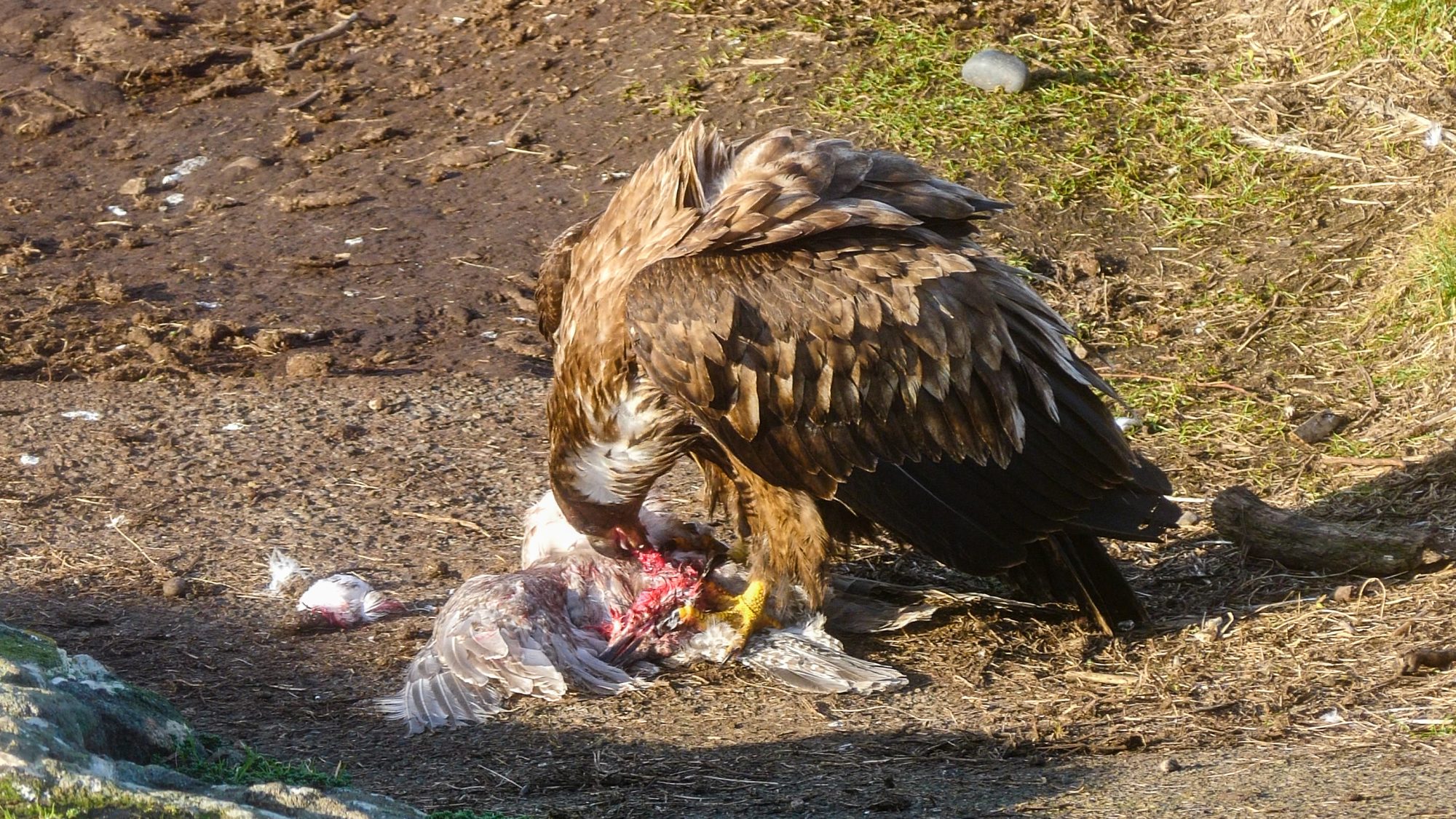
A Bald Eagle decided he wanted a fresh meal and nailed this gull right out of the air. Turns out there isn’t much meat on those gulls.
We got a late arrival to the party: Jolene, the fifth female to come ashore for the 2021 birthing season. She showed up on January 21st 2021, and birthed on the 28th around 10am. There is some inital commotion where one of the other moms came over to get a sniff and toss around our new baby Hector (named by the marine science class).
After that initial bit of excitement Hector and Jolene settled in the pod of Elephant Seals. I’m pretty sure this is the new record for births on Race Rocks! Exciting to see the population growing.
We had the marine science class come visit Race Rocks today! Super fun to get a chance to talk with these super interesting students about Elephant Seals, Race Rocks, and manipulating the stock market.
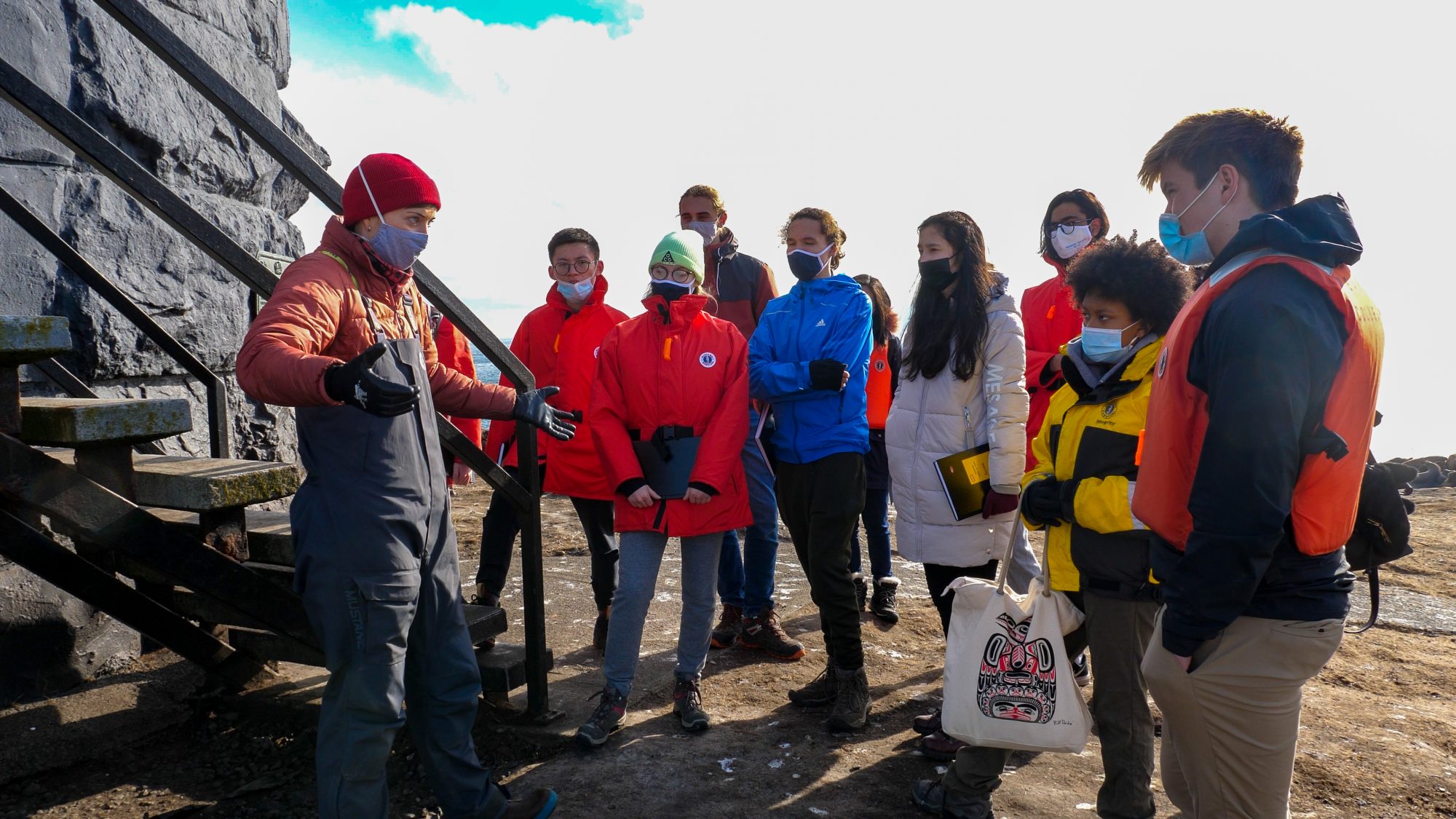
Courtney Edwards regaling the marine science class with stories of lighthouse keepers and Race Rocks itself!
Also: an eagle snagged a gull today. So cool!
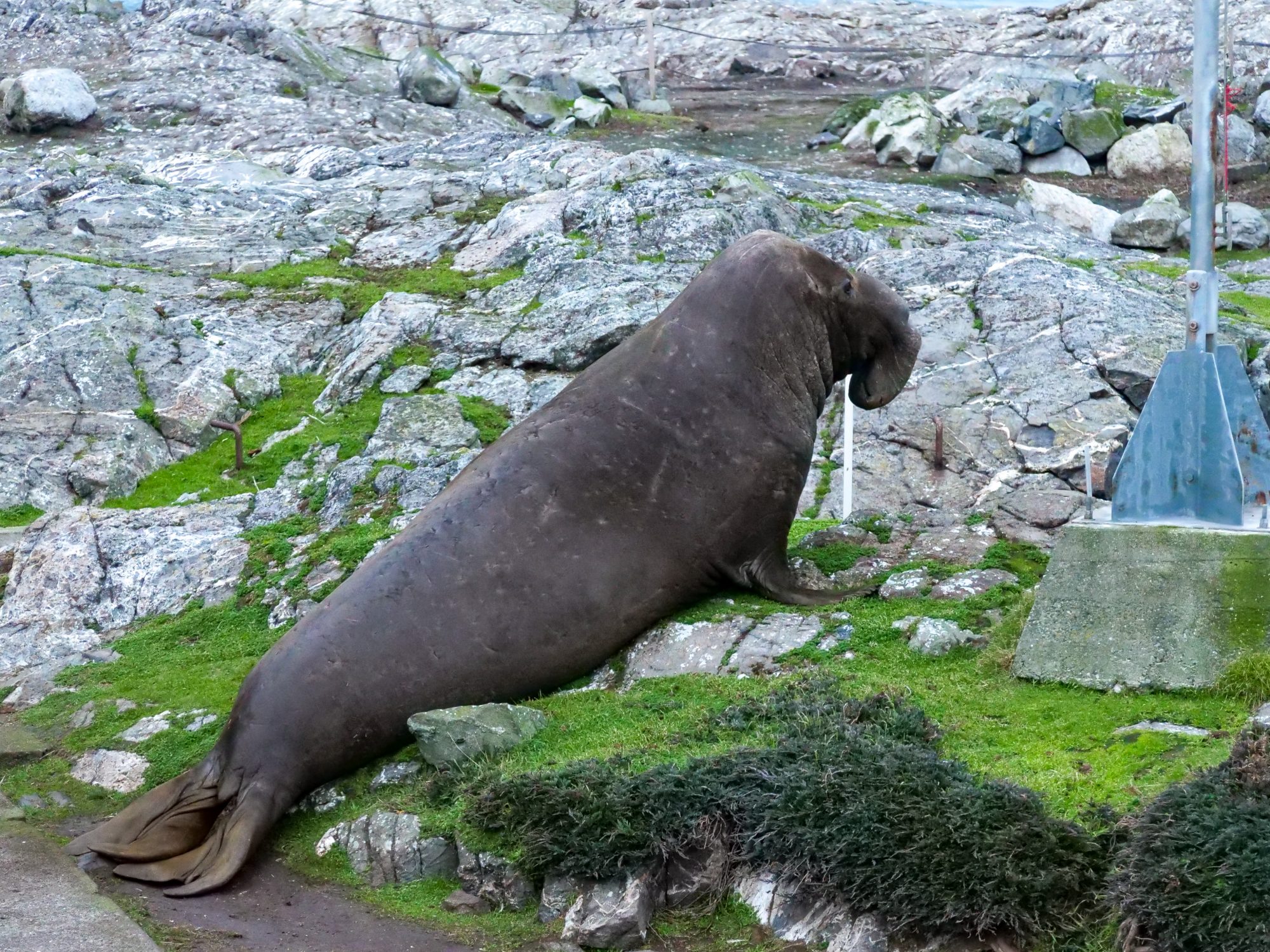
Bernard defending his harem. A sneaky male thought he could get up the boat ramp without he Beachmaster noticing. Silly rival, Bernard knows all the tricks.
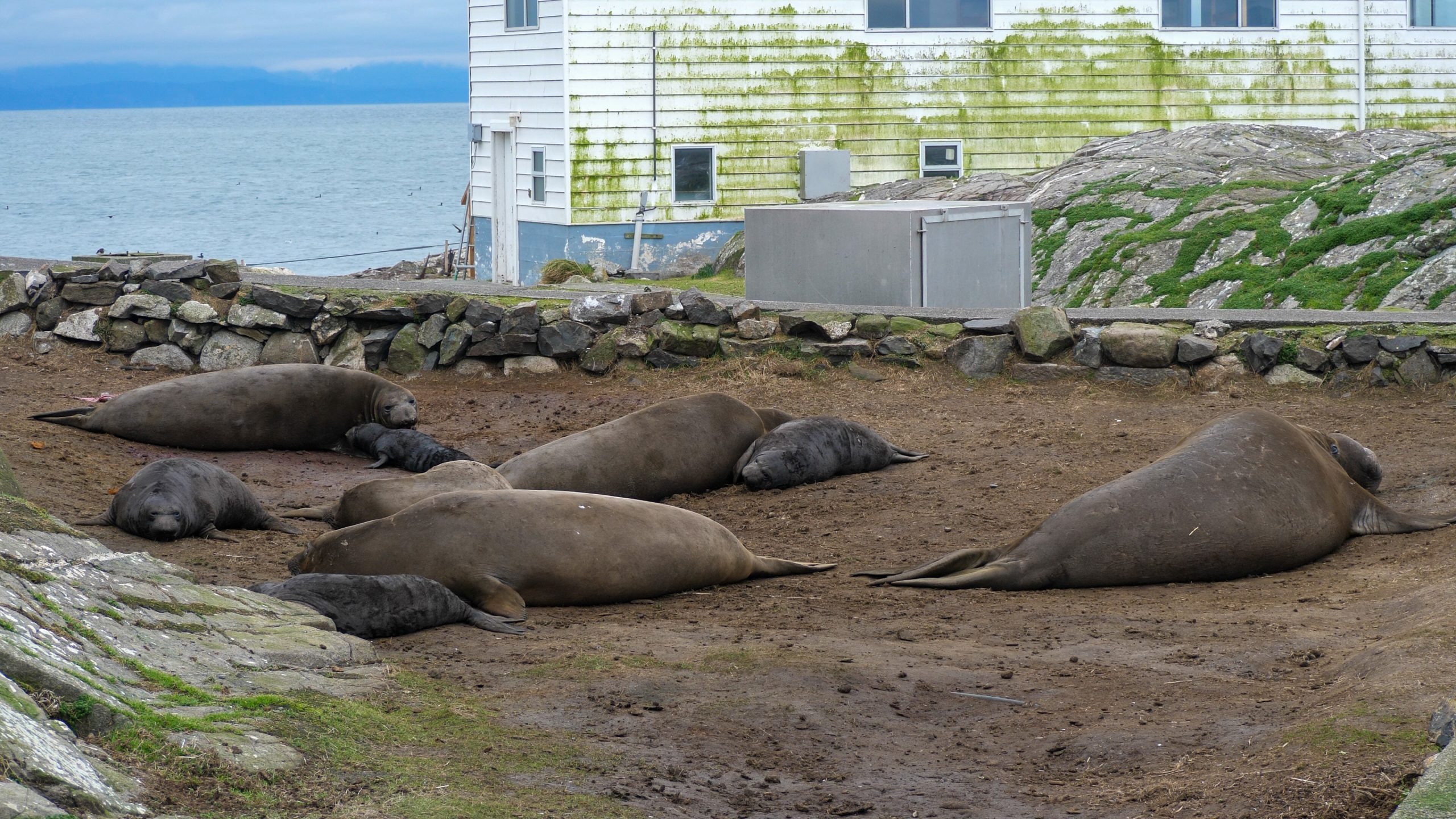
I like including moments of peace, because that is what it is actually like here. Moments of extreme excitement, followed by naps and nursing.
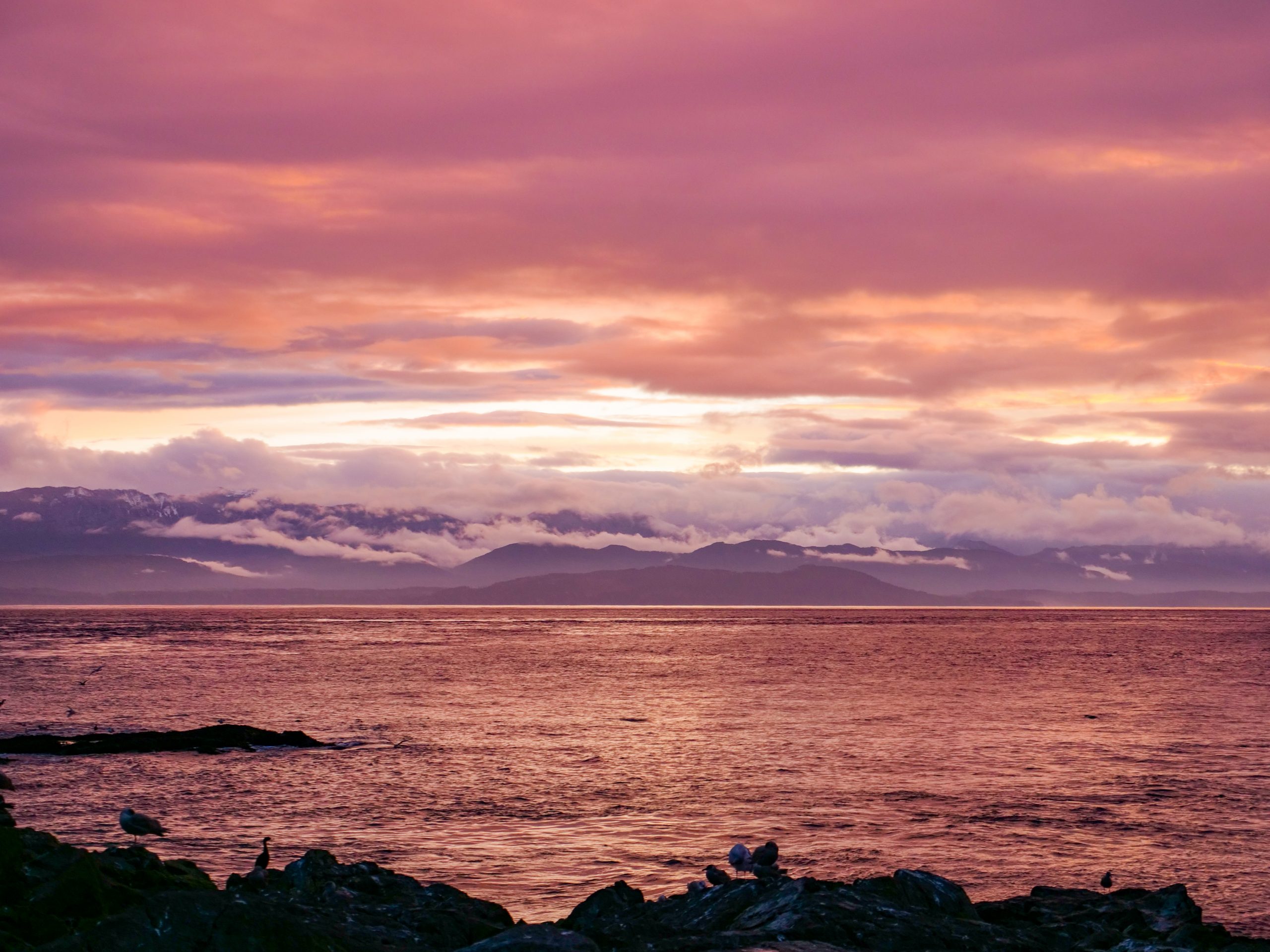 Weather: Lighter winds with some sun. 50knots winds on January 26th. Frosty mornings on the 22-26th.
Weather: Lighter winds with some sun. 50knots winds on January 26th. Frosty mornings on the 22-26th.
Visitors/Traffic: Some tanker traffic and 2 whale watching boats.
Ecological Notes:
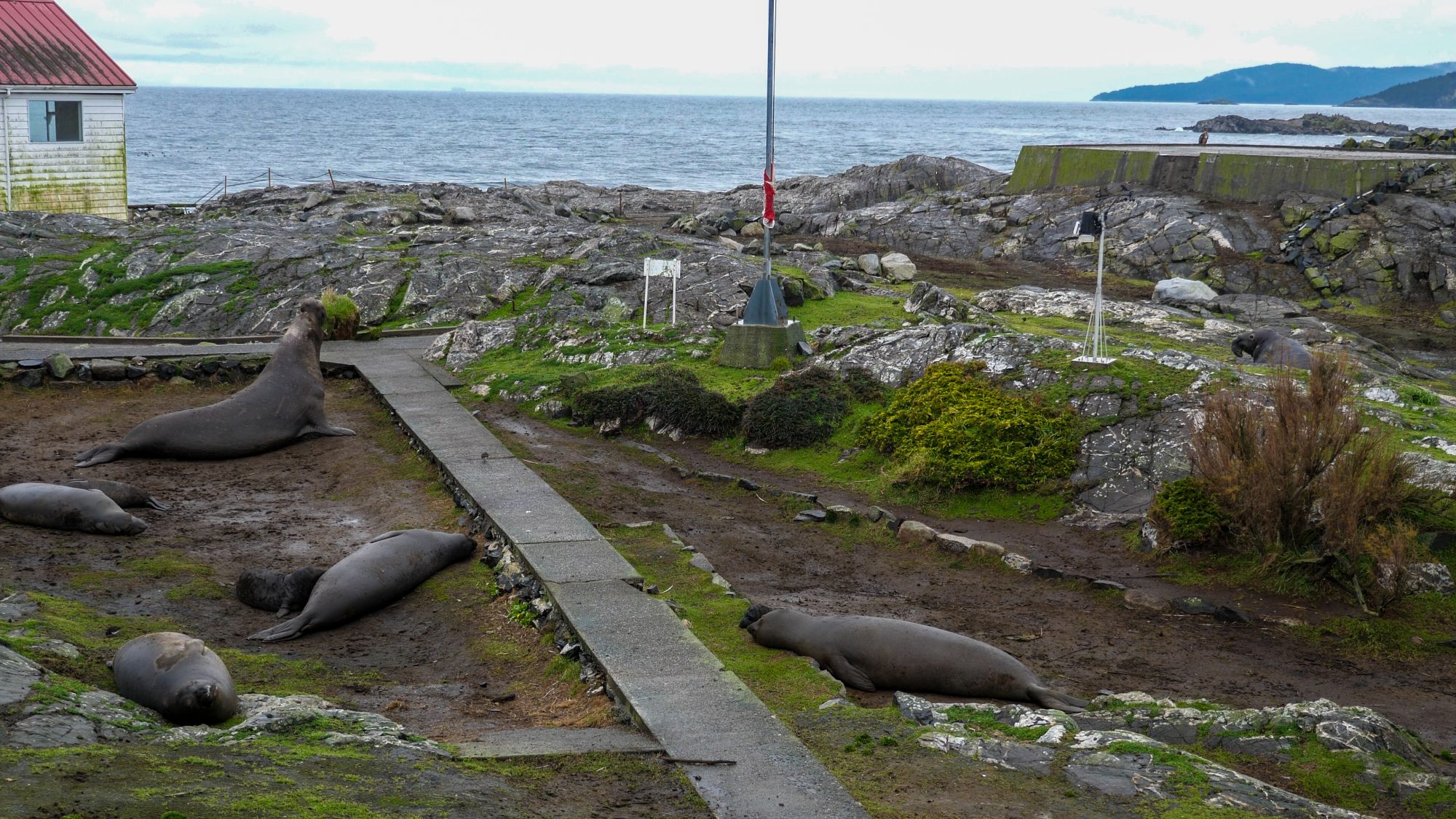
Bernard drumming to defend his harem. The newest male is on the right trying to sneak around the Race Rocks Crossroads unsuccessfully.
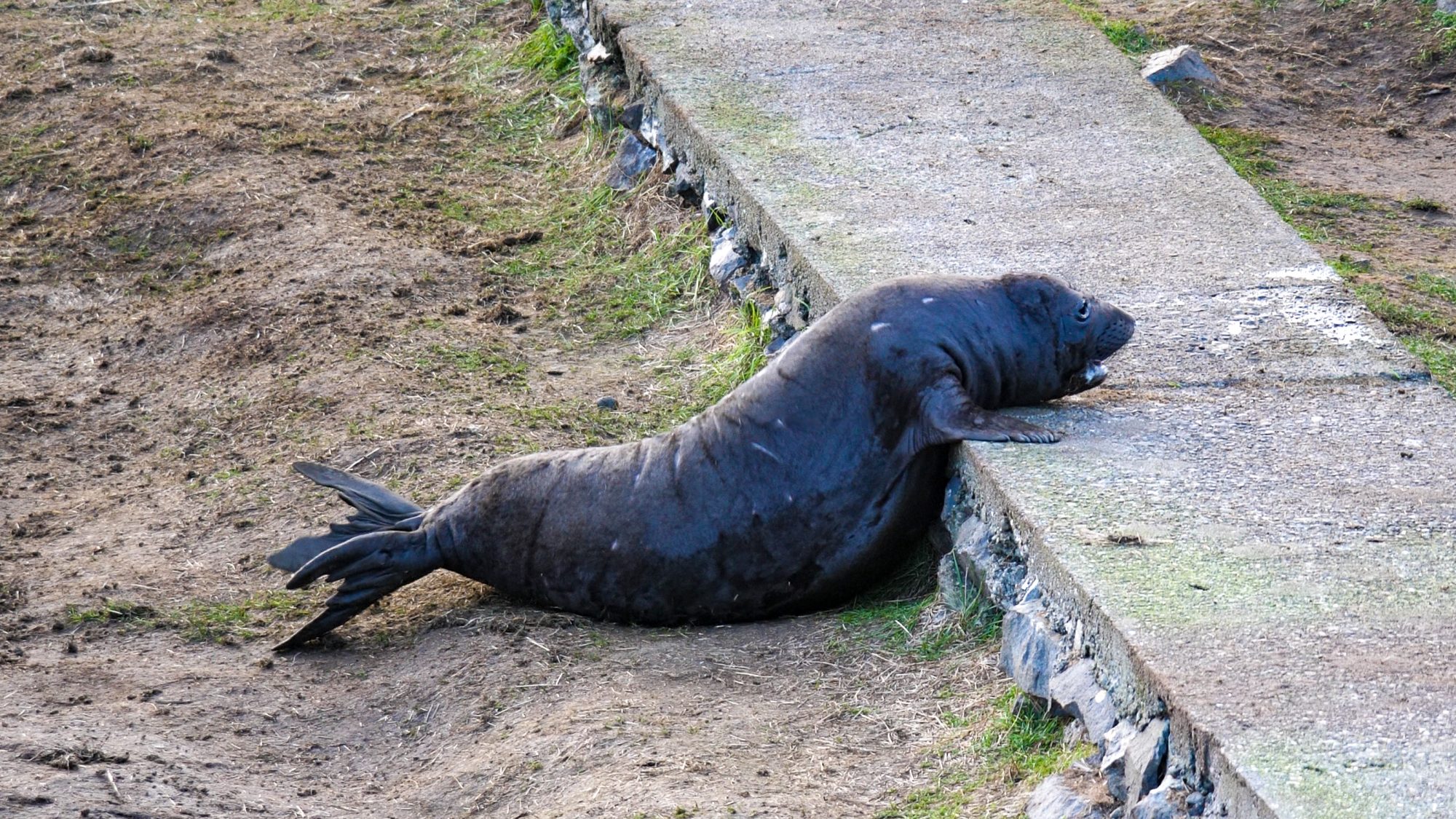
Baby Elephant Seals get fat. REEEEEAL fat. So fat that they can’t really navigate some obstacles. https://youtu.be/tm0SC5lDBQw
We had a new female Elephant Seal show up on January 21st, bringing our total moms to 5 for 2021. We have four pups with only one weaned so far, but the other two fattest pups are expected to be weaned next week. The new female looks pregnant and is exhibiting the same behavior the other moms did before giving birth: lots of ‘chirping’ and wandering around trying out all the comfy spots. The new female also shuffled the other mothers: before the two oldest mothers would aggregate and keep the third mother away. Now the newest female has assumed the ‘shunned’ position while the three mothers are aggregating with their pups and little conflict.
We finally clued in that there have been 3 males hanging out around the island: the dominant male (Bernard), a male who became submissive after battle, and a third male who’s quite a bit smaller and clearly submissive. This third male has a bit of damage around his left eye, kinda like a classic Disney villian with a scar on it’s eye. He’s been coming up the ramp trying to sneak around Bernard, but would retreat after an impressive bout of drumming.
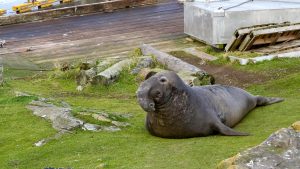
Our newest male (Jafar) trying to find a place to hide on the Island without the Beachmaster noticing.
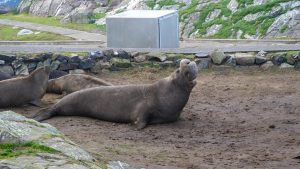
Bernard not having any of these males advances on his harem. He really has a second level he can take his drumming to show his dominance. If you heard his super low drumming, better skedaddle, as he’s had enough of you.
Census:
Gulls: 118
Cormorants: 281
Eagles: 9
California Sea Lions: 160
Steller Sea Lions: 119
Elephant Seals: 9
Harbour Seals: 14
Turnstones: 7
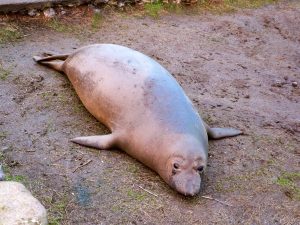
Our newest arrival: Joelene! She’s quickly assimiliated into the Race Rocks pod. She arrived on January 21st, so we would expect her pup sometime around the 28th.
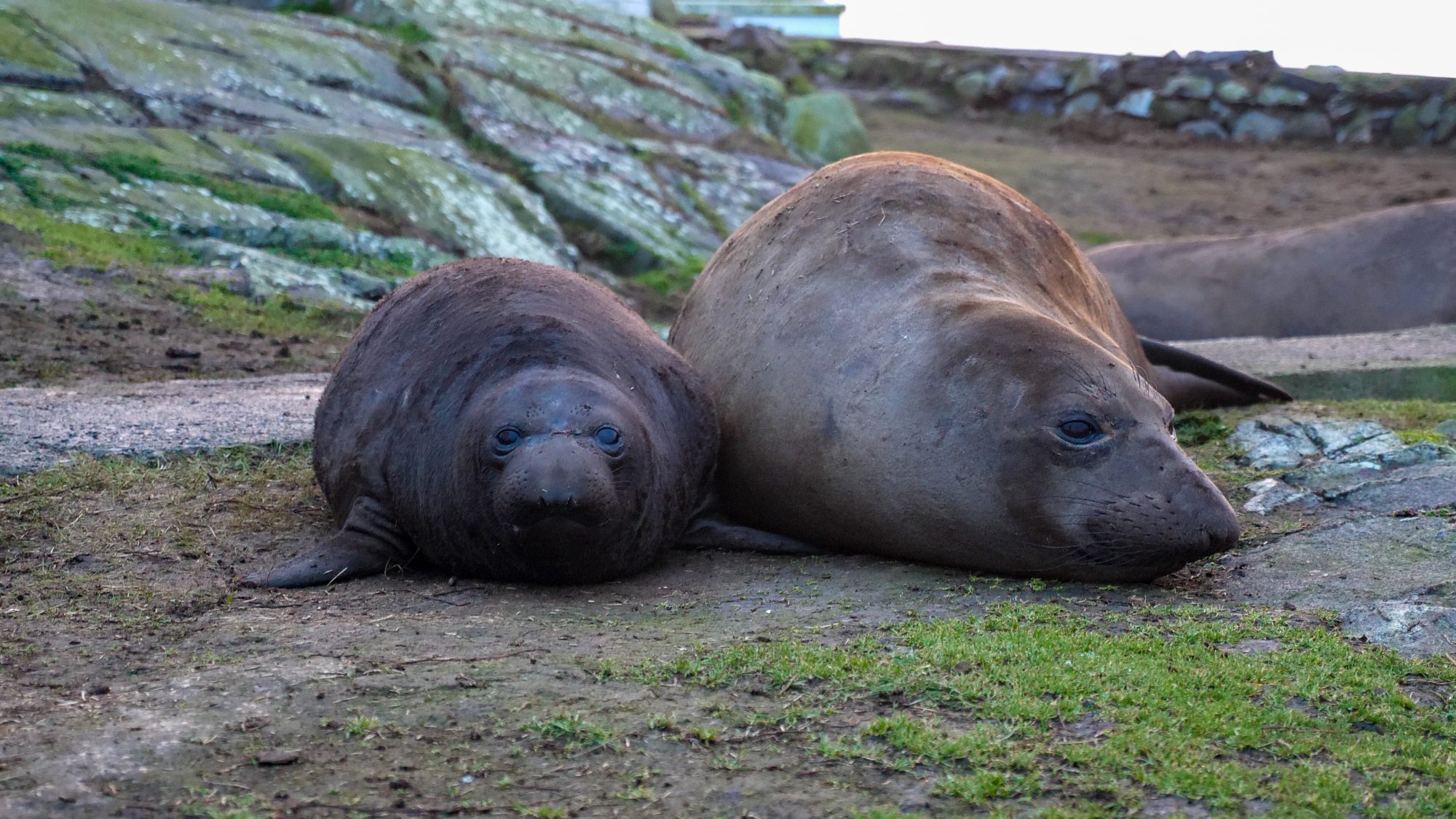
That amazing phase where the pups start to rival their mothers bulk. 14 days in and looking healthy little guy!
Weather: Overcast morning, with a sunny afternoon. Winds 15-25knots. Big storm on January 11th that blew our doors and windows open.
Visitors/Traffic: After a week of no visitors we got 4 boats today: a whale whatching boat, 2 small fishing boats and a yellow sailboat that was very interested in getting in close to the jetty.
Ecological Notes: Immediately after the last birth a new female showed up on the island (January 11th). Cheermeister’s mom left him on January 12th (21 days of nursing) after making with the Beachmaster 76 times over 3 days. I didn’t inspect every event, so the total could higher than that, but it was an impressive feat. The Beachmaster has shown no interest in any of the other females. There are still 2 large males on the island, with the Beachmaster (previously referred to as Bernard) staying with the females and the other male hanging out around our compost.
The new seal gave birth last night, bringing our total seal pups to 4!
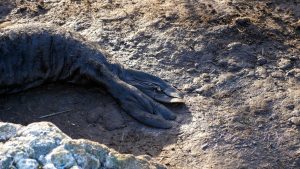
Elephant Seal flippers look so ridiculous when they’re born, just oversized and floppy. Kinda like puppy paws.
Tons of eagles on the island this morning, which usually coincides with a reduction in other birds counted.
Census:
Gulls: 136
Cormorants: 360
Eagles: 40
Turnstones: 13
Elephant Seals: 9 [2 bulls, 3 females, 4 pups]
Steller Sea Lions: 142
California Sea Lions: 155
Harbour Seals: 6
Weather: Overcast, but mostly sunny over the last few days. winds 15-20knots.
Visitors/Traffic: Pretty quiet week, a few fishing boats driving by.
Ecological Notes: Newest Elephant Seal pup was born today. This makes 3 pups total, with the oldest nearing the end of his nursing period. His mom is looking VERY depleted, with 3 more days estimated until the end of her nursing period. His mom has also had a large behavioural change: previously she would ‘fight’ with the Beachmaster when we attempted mating, but over the last 24 hours she’s now much more receptive to his advances. 13-14 times a day receptive.
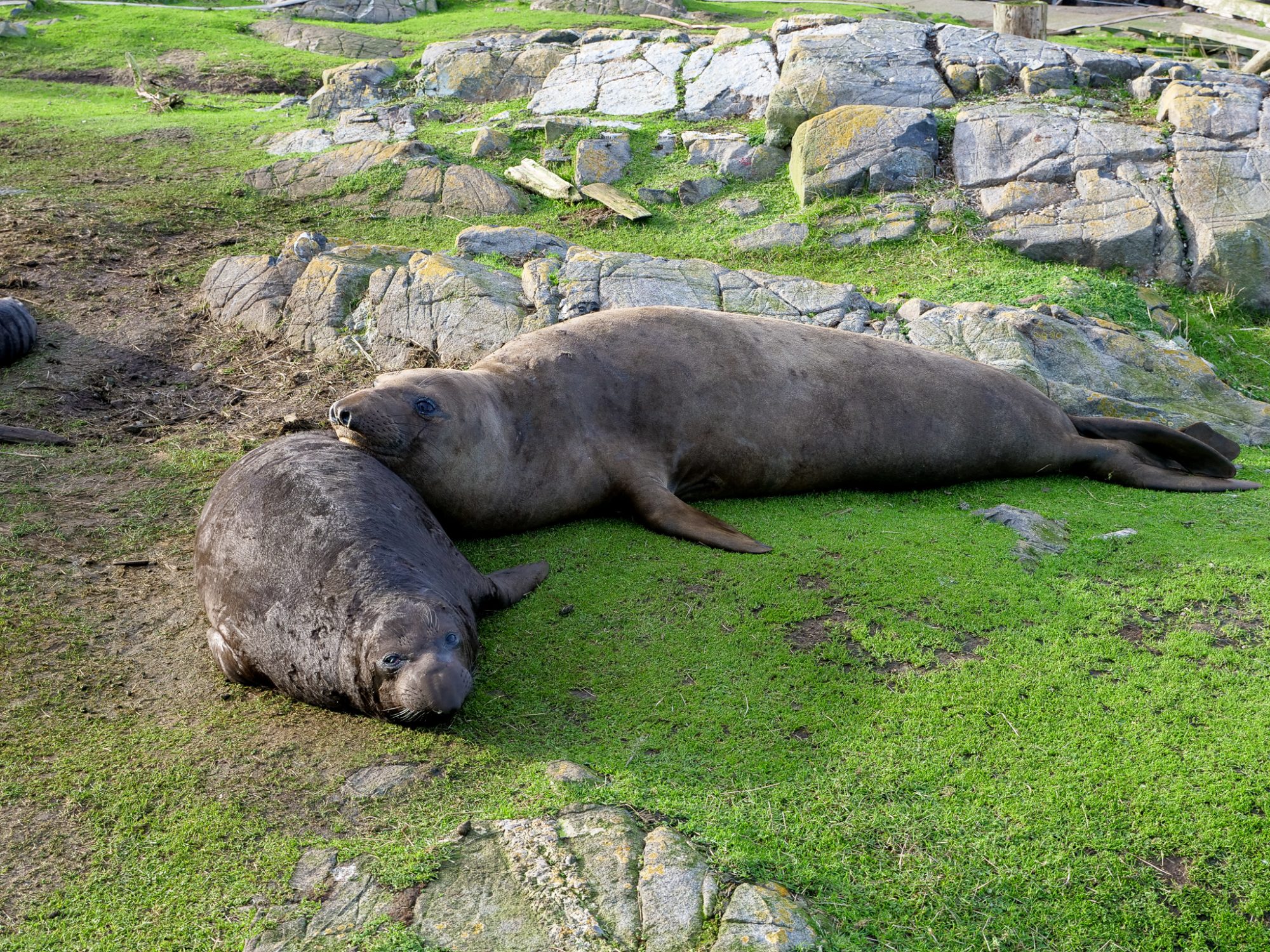
Cheermeister at 19 days. Looking fat and healthy as his mom gets more and more depleted. In 2020 we saw the pups nurse for 23 days, so he’s getting close to the end of ‘free food’.
Census:
Gulls: 259
Cormorants: 719
Eagles: 6
Turnstones: 22
Elephant Seals: 8 [2 bulls, 3 females, 3 pups]
Steller Sea Lions: 160
California Sea Lions: 121
Harbour Seals: 10
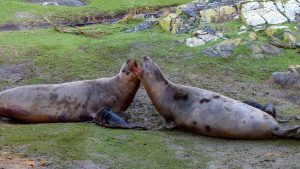
Mothers seem to have lots of aggression shortly after a pup is born. Every pup we’ve seen get born here coincides with a bought of mom-on-mom aggression. Although Courtney has pointed out that this is my interpretation of their behaviour, and this could just be a ‘welcome to the fraternity of motherhood’ moment.
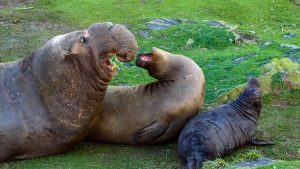
Mating looks rough. In larger rookeries this often results in pups getting squished. Here, Cheermeister just needs to avoid getting pinned and he should be good. He’s repetitively gotten in the middle of that mating between his mom and the Beachmaster and hasn’t died…. yet.
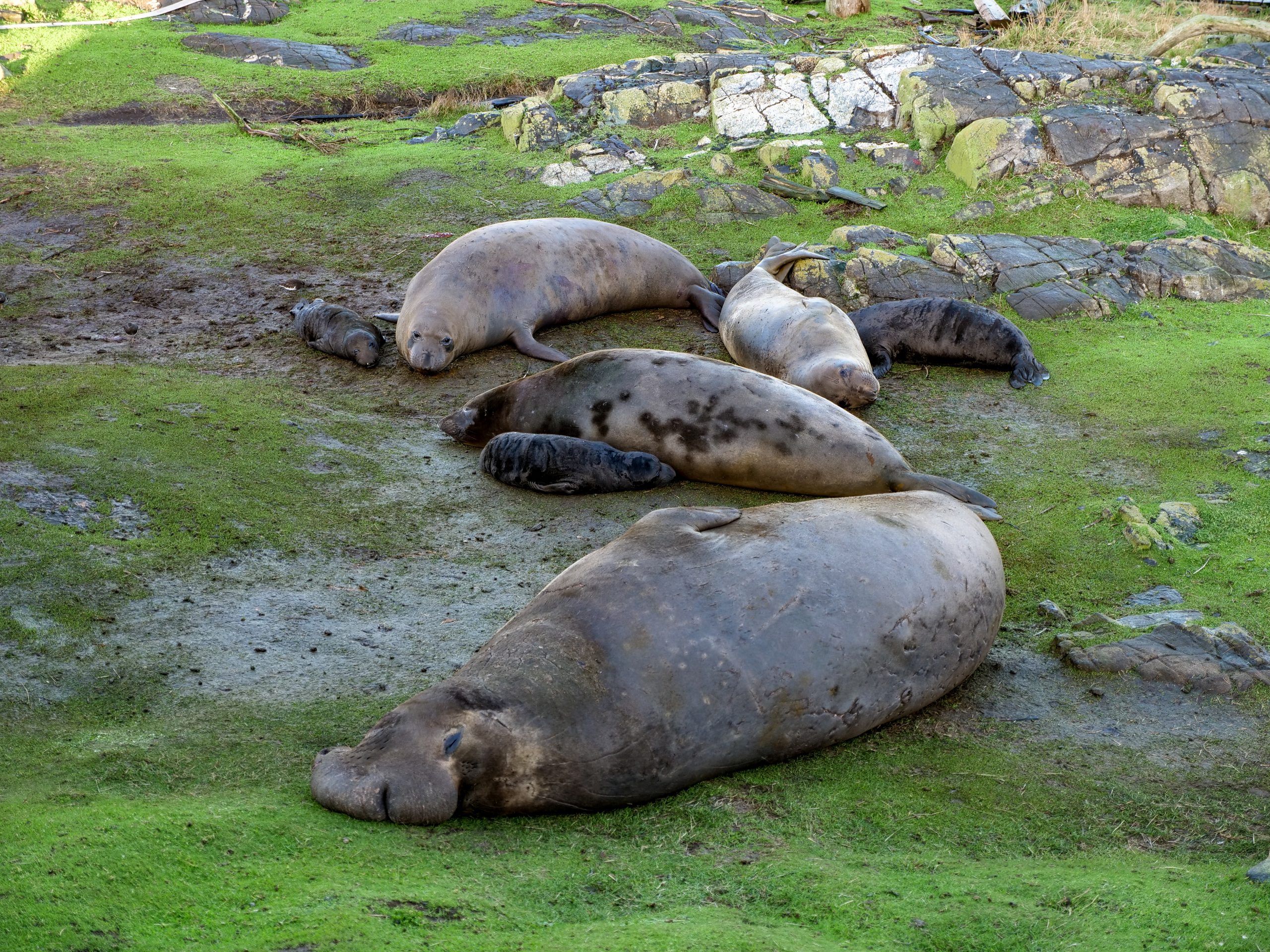
Peace descends. As with all things Elephant Seal: the chaos doesn’t last long. After 30 min of excitement everyone rolls over and falls asleep until tomorrows moment of activity,